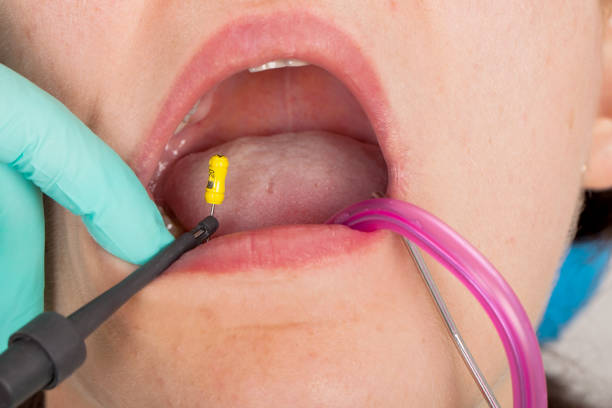Tongue tie, medically known as ankyloglossia, is a condition present at birth that restricts the movement of the tongue. This condition occurs when the lingual frenulum, the thin band of tissue that connects the bottom of the tongue to the floor of the mouth, is unusually short, thick, or tight. As a result, individuals with tongue ties may experience difficulties with activities such as breastfeeding, speaking, and oral hygiene. Understanding the causes, symptoms, and treatment options for tongue tie is crucial for both parents and healthcare providers.
Causes:
The exact cause of tongue tie is not always clear. However, it is believed to result from a combination of genetic and environmental factors. Some babies may inherit a short lingual frenulum from one or both parents, while others may develop it due to factors such as poor fetal positioning in the womb or abnormal tongue development during fetal development.
Symptoms:
Tongue tie can present a variety of symptoms, which may vary depending on the severity of the condition. Common symptoms of tongue tie in infants include:
- Difficulty breastfeeding: Babies with tongue ties may have trouble latching onto the breast, leading to ineffective feeding, poor weight gain, and maternal nipple pain or damage.
- Speech difficulties: As children grow older, tongue tie can contribute to speech problems such as difficulty articulating certain sounds, lisping, or challenges with tongue movements necessary for proper speech production.
- Oral hygiene issues: Tongue tie can make it difficult for individuals to clean their mouths effectively, increasing the risk of dental problems such as tooth decay and gum disease.
- Restricted tongue movement: Some people with tongue ties may experience limited mobility of the tongue, which can affect activities such as licking the lips, playing wind instruments, or sticking out the tongue.
Diagnosis:
Tongue tie is typically diagnosed through a physical examination by a healthcare provider. During the examination, the provider will assess the appearance and mobility of the tongue and observe how it moves in various directions. In some cases, additional diagnostic tests such as a speech evaluation or imaging studies may be recommended to assess the extent of the tongue tie and its impact on function.
Treatment:
The management of tongue tie depends on the severity of the condition and its impact on the individual’s quality of life. Treatment options may include:
- Lactation support: For infants experiencing breastfeeding difficulties due to tongue tie, lactation consultants can provide guidance on proper positioning and techniques to improve feeding efficiency and comfort for both the baby and the mother.
- Frenotomy: Also known as tongue-tie release or frenuloplasty, this minor surgical procedure involves cutting or releasing the tight lingual frenulum to improve tongue mobility. Frenotomy is often performed using scissors or a laser and can usually be done in a healthcare provider’s office with minimal discomfort and rapid recovery.
- Speech therapy: In cases where tongue tie contributes to speech difficulties, speech therapy may be recommended to help individuals improve their articulation, language skills, and overall communication abilities.
- Oral exercises: After frenotomy or in milder cases of tongue tie, healthcare providers may prescribe oral exercises to strengthen the tongue muscles and improve range of motion.
Conclusion:
Tongue tie is a common condition that can affect individuals of all ages, from infants to adults. While it can present challenges in activities such as breastfeeding and speech, timely diagnosis and appropriate intervention can help alleviate symptoms and improve overall quality of life. Parents and caregivers who suspect their child may have tongue tie should consult with a healthcare provider like – Dr. JohnHansford for evaluation and personalized management recommendations. With proper support and treatment, individuals with tongue tie can thrive and enjoy improved oral function and communication skills.














